Athletes and employment? The Athletes’ Cooperative v High Performance Sport NZ
1 Feb 2024The recent ruling of the Employment Relations Authority to determine whether High Performance Sport New Zealand (HPSNZ) is required to bargain with The Athletes’ Cooperative (TAC), has been described as a landmark case. It has the potential to have far reaching consequences for both employment law (the status of athletes), collective bargaining obligations on employers, and the funding and support for athletes in New Zealand.
Background to The Athletes’ Cooperative Inc v High Performance Sport New Zealand
In The Athletes’ Cooperative Inc v High Performance Sport New Zealand [2024] NZERA 43, the Authority was required to determine whether HPSNZ was required to commence bargaining for a collective agreement covering elite athletes.
The Athletes’ position
The Athletes’ Cooperative, representing approximately 60 rowers and cyclists, asserted that HPSNZ was obligated to engage with it, following it issuing HPSNZ a notice to initiate bargaining in accordance with s42 of the Employment Relations Act 2000 (the Act). Further, that HPSNZ was required to bargain in good faith, despite no TAC members being employees of HPSNZ, nor within the coverage of a collective agreement proposed by TAC.
HPSNZ’s position
HPSNZ declined to engage in collective bargaining on the basis that it does not employ athletes, including those that are members of TAC, nor was there any intention by HPSNZ to employ any of TAC’s members. There is no contractual direct employment or contractual relationship between athletes and HPSNZ. Rather, the athletes have direct funding relationships with their respective National Sporting Organisations (NSOs), who are funded by HPSNZ.
The broader context
The dispute did not require consideration nor determination of the status of athletes as employees compared to independent contractors.
The broader context to the case is the concern by athletes of the TAC that the current funding model results in low levels of funding to athletes, insufficient priority to athlete wellbeing, and uncertainty and unfairness regarding the way in which funding can be withdrawn.
The funding model by Sport NZ (then Sparc) changed following the Sydney Olympics in 2000; moving to a targeted investment model, where sports demonstrating a strong track record of success and talent to deliver in the future were prioritised. Failure to meet performance targets results in a sport and athletes having funding cut. This system has been criticised as being highly volatile and uncertain, and ultimately putting medals before people and their welfare.
The Authority’s determination
In considering definitions of employer and employee under the Act, the Authority highlighted that:
- Section 40 of the Act provides that collective bargaining may be initiated by one or more unions with one or more employers.
- Section 5 of the Act defines “employer” as meaning “a person employing any employee or employees”. The meaning of “employee” and “employer” are defined in the Act as subject to the qualifier “unless the context otherwise required.”
- TAC met the requirements of being a union under the Act.
- HPSNZ are an employer, albeit they do not employ the athletes pursuing the claim.
In considering the context and its impact on athletes and HPSNZ as employee/employer respectively:
- TAC relied on cases where employees were able to bargain prior to an employment relationship, albeit in circumstances where there was a conditional contractual right to employment.
- HPSNZ asserted that in the cases relied on there was an intention by both parties to form an ongoing employment relationship. This contrasted with the position between athletes and HPSNZ where there was no meeting of the minds regarding any direct relationship or whether any such relationship should be one of employment.
- HPSNZ submitted that the existence of an employment relationship is the ‘gateway’ to employment entitlements and a precondition to collective bargaining.
The Authority held that:
- Reference to the “intended party” to an employment relationship (in section 42 of the Act) relates to how bargaining is initiated. It simply identifies a union or employer intend to be a party to the collective agreement to be bargained for, as distinct from any intention that they be subject to a future employment relationship.
- The objects of the Act do not indicate that the terms “employer” or “employee” should be limited to preclude the initiation of bargaining in circumstances where there are no current employees within the proposed coverage.
- Membership of a union is not restricted to require members be in current employment, and collective employment interests promoted by the union may include matters relating to prospective employment.
- The Act does not require that a union must have members that would be covered by the proposed bargaining, who are current employees of the employer to whom the notice is given (i.e. HPSNZ). Nor does the Act require that conditions relevant to the ratification, application or form of collective agreements be met as at the time of initiation. These provisions are not a prerequisite to the initiation of bargaining.
- While a collective agreement must be ratified by employees to be bound by the collective agreement in order for it to come into force, this is not a requirement at the time bargaining is initiated.
- Good faith bargaining obligations on parties are serious. Section 33(1) of the Act requires parties to conclude a collective agreement unless there is a genuine reason, based on reasonable grounds not to. however, that does not suggest that bargaining cannot be commenced.
Accordingly, ultimately the Authority held that the TAC (union) validly initiated bargaining with HPSNZ (the employer). As a duly registered union initiating bargaining with an employer (that being an employer of any employee), this satisfied the ‘gateway’ to collective bargaining under the Act. Context did not restrict the meaning of “employee” as submitted by HPSNZ.
Implications of the case and what happens next?
The Authority decision is significant, given there are differences between athletes’ working arrangements within the sports industry, including inconsistency in pay.
TAC and HPSNZ will be expected to commence bargaining in good faith.
However, given HPSNZ is clear that it has no intention of employing athlete members of TAC, it is highly unlikely that a collective agreement will be concluded. If bargaining is pursued by TAC, and if HPSNZ takes the position that it cannot or will not bargain in good faith given it cannot conclude a collective employment agreement, further litigation, such as a compliance order being sought by TAC may follow.
Regardless, it can be expected that HPSNZ will appeal the determination. However, that does not result in the Authority’s order being stayed, i.e. HPSNZ will still be required to commence bargaining with TAC.
The Authority’s determination could have significant implications for the New Zealand sports sector. Presently, many elite athletes are engaged directly by their respective NSO as independent contractors. Unless agreed otherwise, a collective agreement could see elite athletes become employees of HPSNZ. That brings with it obligations around minimum employee entitlements, presently not reflected in athlete contractual arrangements. There would be complexities to determine, such as whether such entitlements are extended beyond elite athletes, and how these distinctions could or should be drawn.
The determination could also have broader impacts for employers generally, with regard to collective bargaining obligations, and the extent to and circumstances in which these may arise.
Whether in bargaining or otherwise, concern regarding athlete wellbeing, resourcing, and pay is likely to be an ongoing discussion, potentially addressed by other means. Presently, HPSNZ funding agreements with NSOs provide an ability to revoke funding if the NSO is not providing a safe, healthy and inclusive environment for elite athletes and coaches. This is a direct response to the cultural issues that have emerged in reviews over the past years within New Zealand sports. The athletes suggest this is not going far enough in ensuring that NSOs are meeting their duty of care to athletes in the balance of high performance and athlete welfare.
In the context of the current discussion regarding the ‘status’ of workers (considering cases involving workers at Gloriavale, Uber drivers and courier drivers), there may be scope to consider whether athletes could be captured as ‘dependent contractors’, should legislative change be on the horizon.
The sports sector will be keenly watching this space.
DTI Lawyers provides specialist employment law advice. Director, Andrea Twaddle also provides expert advice in relation to sports law matters. Our team can be contacted by email at [email protected]
Since this article was published, HPSNZ has appealed the Authority’s determination, with the Employment Court scheduled to hear the matter in September 2024.
A copy of the Authority's determination can be found at: https://determinations.era.govt.nz/assets/elawpdf/2024/2024-NZERA-43.pdf
The Independent Investigation (often referred to as the 'Heron Report') into Cycling New Zealand and HPSNZ can be found at: https://cyclinginquiry.co.nz/
In some overseas jurisdictions, it is acknowledged that there is a large and vulnerable group of workers, often with little bargaining power, who would substantially benefit from some additional legal protections. This is reflected in a category of worker that sits between ‘employee’ and ‘independent contractor’, which broadly can be considered to be a ‘dependent contractor’. In 2019 MBIE considered a series of legislative changes, including a proposal to introduce dependent contractors as a new category of worker. Dependent contractors could be granted some, but not all, employment rights and protections. However, the Government working group in 2021 did not recommend the formation of this category of worker.
Content from: www.dtilawyers.co.nz/news-item/athletes-and-employment-the-athletes-cooperative-v-high-performance-sport-nz






